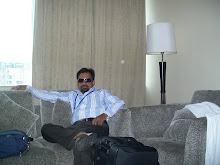WITCHCRAFT-GENDER VIOLENCE MORE COMMON THAN SATI CALLS
FOR LEGISLATION IN INDIA
By
Dr. Alok Chantia, Lecturer,Dept. of Anthropology, Sri J.N.P.G.College,Lucknow
Dr. Preeti Misra Lecturer,Dept.of Human Rights,School for Legal Studies,Babasaheb Bhimrao Ambedkar
University,Lucknow;Formerly Lecturer in Dept.of Law, Sri J.N.P.G.College,Lucknow
Dr.D.K.Singh, Reader, Dept. of Social Work, Lucknow University, Lucknow
Abstract
Indian newspapers periodically publish reports about women who, after being accused of
being witches, have been beaten, had their heads shaved or had strings of shoes hung
around their necks and some have been killed.Many times the belief in witchcraft leads to
violent incidents resulting in the plucking of teeth, breaking of hands and legs, cutting off
the tongues, and in some cases burning to death of the so-called witches. Gruesome
murders take place and sometimes women are banished from the village after subjecting
them to severe torture. The woman are stripped, tortured and taken to a local witch doctor
who conducts elaborate rituals to rid her of an evil spirit that villagers believe had
possessed her. The villagers then ask her to leave the village. Some women are branded
as witches and killed and sometimes even their husbands are eliminated by relatives to
usurp their property.
Superstition and faith in witchcraft often are a ploy for carrying out violence against
women. Superstition is only an excuse. Often a woman is branded a witch so that one can
throw her out of the village and grab her land, or to settle scores, family rivalry, or
because powerful men want to punish her for spurning their sexual advances. Sometimes
it is used to punish women who question social norms.
Witchcraft (Dayan Pratha) is nothing but violence against women, it is antithesis of
empowerment of women. The belief in witchcraft and its practice seem to have been
widespread in the world over. In India in the Vedic Age, witches were recognized and
called as yogins. In present Indian society the phenomenon of witchcraft is not only
prevalent in tribal and rural societies but is also found in modern urban societies. The UN
has also released figures of the victims of witchcraft and black magic around the world.
The world body has named India along with countries in Africa, Asia and South America
as a high-incidence zone for witchcraft related killings.
In India, the highest incidence of witchcraft-related crimes occur in Andhra Pradesh,
Bihar, Chhattisgarh, Orissa, Jharkhand and Uttar Pradesh. But only a few Indian states
have outlawed witch-hunting. As the fear of witchcraft and its existence is culturally
rooted, sometimes even the lower rung of the police and others fail to take note of the
violence. At times the criminals escape punishment for their misdeeds. Only 2 percent of
people charged with witch-hunting are convicted in court. People go scot-free because
witnesses are hard to come by.
The present paper highlights historical and present day phenomenon of witchcraft in
tribal, rural and urban societies of India. It makes an in depth analysis of etiology of
witchcraft and propagates for a strong central legislation to punish the wrongdoers who in
the name of superstition perpetuate all kinds of violence against women. The paper also
emphasizes upon the role of society, media, police and judiciary in educating the masses
and in combating violence against women in the name of witchcraft.
Subscribe to:
Post Comments (Atom)

No comments:
Post a Comment